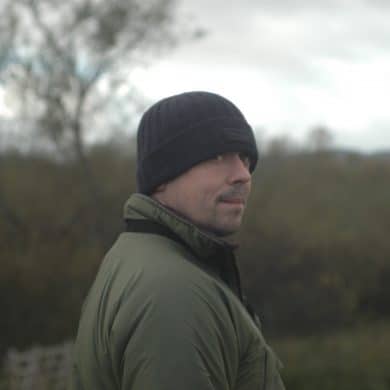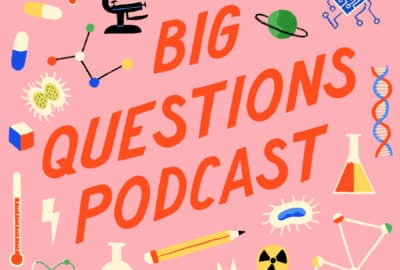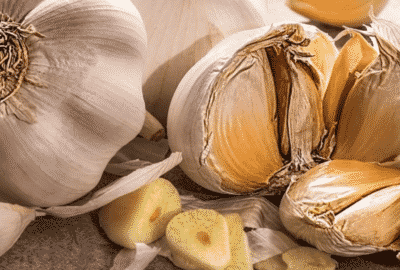Would you want to meet an alien?
Wednesday 21st Jun 2023, 12.30pm
What might an experimental petrologist (someone who makes rocks in the lab) and an immunologist (someone who studies the body’s defence system) have in common? Well, it turns out, a shared interest in iron might be one thing. And what does all this have to do with aliens, and, specifically, whether you would want to meet one? Well, you’ll have to listen to find out! With Prof Jon Wade from the Department of Earth Sciences.
Emily Elias: It might sound cool to meet a UFO, but like, what would happen if they actually dropped from the sky and came to planet Earth? What would their intentions be? Would they be after intergalactic peace? On this episode of the Oxford Sparks Big Questions podcast, we’re asking, “Would you want to meet an alien?”
Hello, I’m Emily Elias and this is the show where we seek out the brightest minds at the University of Oxford and we ask them the big questions. And for this one, we have found a researcher who’s ready to explore some pretty wild hypotheticals.
Jon Wade: Hi, I’m Jon Wade. I am Associate Professor in the Department of Earth Sciences at Oxford. I’m a research scientist, I’m very interested in the evolution of planets, the formation and the evolution of planets. If you asked you what my field is, I’m an experimental petrologist, which is somebody that makes rocks in the lab.
Emily: Okay, so forming rocks in a lab and aliens doesn’t seem like a natural marriage of-
Jon: No, it doesn’t.
Emily: Explain to me, how do they come together?
Jon: Well, so, basically, like all good ideas, it came together down the pub. So, I met a chap down the pub, and we had a paper published, oh, about 2017, 2018, and it was about water on Mars. It was about how water reacts with the rocks on Mars, and it was a reasonable high-impact paper. And I was chatting to this chap, and we’d done the usual things. We’d sort of gone through our terrible football club histories, and this, that and the other, and we decided that football was probably not worth talking about.
And then he said to me, “So, what do you do?” And I said, “Oh, I work in Earth sciences and I’m interested in iron.” And he looked at me funnily, he said, “Did you have a paper out recently about Mars, and iron on Mars?” And I said, “Yeah.” And I was a bit surprised he’d read it. Turns out he’s a professor of iron microbiology up at the Weatherall Institute, which is our institute of immunology, up in Oxford.
And he read this paper, and there was an overlap. There was that sort of dawning, the heavens opened, and he’s very interested, Hal Drakesmith, Professor Drakesmith, he’s very interested in the effects of iron on biology, on life, on the progression of diseases, and so on and so forth. And of course, I’m interested in the history of iron in planets, and there’s an overlap: Life lives on the Earth, Earth is a planet, and the surface of the Earth, essentially, really determines the course of evolution.
And we got chatting, and that’s really where it came about. So, in the lab, I investigate things like planetary core formation, so the process of segregating iron that disappears down to the centre of the Earth and makes the Earth’s core, gives us the magnetic field that protects us from various cosmic solar rays.
I’m interested in those processes, but of course, it leaves a mark on the rocks, and the rocks then leave a mark on life. And that’s how we got chatting. It was sort of, “Oh, yeah, you do iron. I do iron. Oh, let’s get together and do a bit more iron,” and it’s been great.
Emily: Okay, but then, I’m still not quite where we get to the aliens part of the story, because yes, iron must be very important for life on planets and us in our own bodies, but why would an alien care about iron?
Jon: Why would an alien…? That’s a good question, and it’s a bit out there. But, actually, if you think about it logically, so our Earth forms, the terrestrial planets, that is Mercury, Venus… We don’t know much about Venus. Venus is Earth’s evil twin. But, Earth, Mars, and then there a few asteroids, like Vesta. They’ve all got lots of iron in them, but most of the iron is sequestered, it’s hidden away in the centre of the planet.
So, for instance, on Earth, about 32% of the Earth is made of iron. It’s the most abundant element on Earth, followed by oxygen and silicon. But, most our iron is in the middle of the Earth. It’s sequestered into the middle of the Earth, and that’s true of all the terrestrial planets. I mean, certainly Mercury: Mercury is mostly iron. And this process, we can simulate in the lab, certainly chemically simulate in the lab, and that’s what we’ve done. That’s what I’ve been doing over the last 20-odd years, is we sort of take up the raw ingredients, the building blocks of planets, we squash and heat them, and we look at where the elements end up.
So, we look at where the iron in particular ends up in the core, and it also has effects of pulling in other elements, elements like nickel, vanadium, chromium, all those transition elements that life might use. So, most of those elements are in the core. There are some left in the mantle, and that sort of sets the scene for what comes next. So, one of the things that happens is on Mars, we’ve said that actually, Mars is further away from the Sun.
So, actually, it’s a bit more oxidised. It’s got a bit more oxygen around when it’s forming, and it therefore has a little bit more iron in the rocks. But, the problem is, on Mars, those rocks become quite reactive with water. So, as the planet gets older, those rocks react with the water and they go rusty. Mars is the planet for a good reason. And actually, they react with that water, and they pull the water down.
So, Mars, with more iron in its rocks, has the potential, we would argue, to sort of soak up that surface water. Right, but on Earth, we have a bit less iron. We have less than half the amount of iron in the rocks, in the silicate part, the rocky part of the planet than Mars does. And yet, we’ve also had water kicking around the surface of the Earth for as long as the Earth has been around, at least 4.6 billion years.
Yeah, so if we didn’t have water, we wouldn’t be here. We wouldn’t exist. We’d be dry and dead, like Mars. So, that’s one story about the iron, is how you keep water on the surface of the planet. But, the other way is if you go like Mercury, Mercury is closer to the Sun, it’s much more reduced. It has very, very little iron in the rocks, because it’s all in the middle of the planet.
But, not only does it have very little iron in the rocks, it has very little of the other trace elements, elements like nickel, molybdenum, tungsten, that life could use instead of iron. But, they’re all swallowed up in the middle of the planet as well. So, we would argue, or I would argue, that we’re in some sort of almost compositional sweet spot. Yeah, we’ve got just enough iron for you and me to be happy, but we don’t have too much that we run out of water, the water on the surface of the planet reacts.
So, that’s sort of the broad picture, chemical compositional story. But then, of course, life comes along and sits on top of that, and life uses iron, and it uses iron in all sorts of ways. I mean, iron is the only major element in rocks that is the rock-forming element that undergoes oxidation and reduction reactions on the surface of the planet. Silicon doesn’t do it, aluminium doesn’t do it, titanium doesn’t do it, iron does.
Iron, you can have… It forms lots of bonds with other atoms. It can move electrons around, it can give and donate an electron, so you can use that as a sort of power source or as a means of moving energy around. You can do catalysis with it. And it’s very, very abundant on the surface of the Earth. It’s very bioavailable, which is why life uses it.
And that’s kind of cool, and that’s really where that link between what my biochemistry chums do, which is much more complicated than what we do and what I do, which is sort of a bit further back, but there is that sort of continuum, that link of interest, and it’s kind of cool.
Emily: So, our easy access to iron would potentially make us a target for aliens to-?
Jon: Yeah, exactly. So, if you’re going back to the alien story, the thing here is that life on Earth originated we now think very, very early in the history of the planet. It’s been pushed back. So, what we call the last universal common ancestor, LUCA, appears to be… We don’t know for sure, but there are lines of evidence that suggest it forms very, very early in the history of the planet, like four billion years ago. Right, and you’ve got to remember, four billion years ago, the Earth wasn’t like it is today.
So, one thing the Earth didn’t have, it didn’t have any oxygen in the atmosphere. So, this has big effects for the amount of iron in things like the sea, so water. So, without oxygen in the atmosphere, iron exists as iron(2+) in the water, and it’s very, very soluble. So, about four billion years ago, you could say that there were probably around 100,000 to maybe almost a million times more iron in the seawater than there is today.
So, life is getting going, it’s getting its act together in an environment that’s very, very different to today, and it’s using that iron, and you see this across all of life. I mean, apparently. I’m not a biochemist, so I don’t know, biochemists, immunologists, don’t shout at me if I get it wrong. But, apparently, iron is used in pretty much every living organism apart from two bacteria, one of which is in yoghurt.
And everything else using iron in some way. It may not use it in the same way, but it uses it in some way, and it’s telling you about the availability of iron back when life originated, almost like its programming language of life that is driven by what was around at the time. Now, you go on two billion years and life does something…
Everything is really, really happy until life figures out how to do photosynthesis, and photosynthesis also uses iron, but its biggest consequence is its waste product is oxygen. So, when bacteria, sort of simple cells are generating oxygen, it’s a waste product. And around about 2.2 billion years ago, you get this sniff of oxygen in the atmosphere, for some reason, we’re not entirely sure why, there are lots of different reason. But, you get this sniff of oxygen in the atmosphere and the consequence for that is big. It’s big for iron.
That waste product, oxygen, reacts with the iron in the seawater and it forms in soluble iron, oxidised iron that sinks out. And life then loses all this really abundant element it really needs to do things with, and it all sinks out and becomes less bioavailable, significantly less bioavailable. So, that causes a problem.
So, it’s almost like, you know, what would an analogy be? I really like crisps, right, I live for crisps. Without crisps, I’m not a happy person. But, if you take my crisps away, what am I going to do? I’ve got to find mechanisms or I’ve got to live with a crisp drought. I’m not happy about that. I do actually like crisps. Bugs in the sea 2.2 billion years ago have now got an iron drought.
There’s no iron around, they’ve got to come up with mechanisms, but iron is fundamental to the way they live, a bit like crisps and me. Crisps are fundamental. You take crisps away, I’m not a happy bunny. So, life then has to come up with different coping strategies, and there are lots of different coping strategies that life might come up with. So, one of them might be to share iron.
So, we can live in a nice, cuddly world. We’re all friends together. I’ve got some iron, when I’m done with my iron, I can give it to you. It’s like I can share my crisps, so that’s the sharing strategy. And so, there’s evidence in the biological record that this actually goes on. This is where things like multicellularly might come from. You know, we’re all cells and we’re all floating around together.
I’ve acquired a tiny piece of iron from the ocean. Years ago, it was loads there, but now there’s none. But, I’ve got it, and we can share. We can be multicellular, we can share it around. But, there are other things that might happen as well. The crisp analogy, I see you’ve got a packet of crisps, I really want those crisps, I’m just going to eat them. I’m going to steal them off you. So, predation and infection also are responses to this loss of iron in the environment.
Lots of things happen, some good, many bad; predation, infection, sharing, coping, and it’s all a response of iron, and you see this around us today. So, lots of diseases, at a very fundamental level, are about the acquisition or the protection of iron from a pathogen. So, to give an example, the genome of bubonic plague, for instance, a large chunk of that is given over to acquiring iron.
Malaria, what essentially is happening there is the parasite wants to steal your iron, and that’s a reflection of what went on two billion years ago. So, my shout would be to go all the way forward and go to aliens: Iron is the most abundant element in the Earth, in planets. It’s a very stable nucleus, so when it’s made, it’s the end point of a star’s evolution. So, a star happily burns until it gets to iron, and then it goes back.
We use that iron, that iron then gets thrown around into space, in a supernova, then gets recycled into planets, and other stars, and so on and so forth. So, it’s kind of like the elemental end point of the universe. Iron is very stable, and so it’s going to be very valuable, it’s going to be very common across the rest of the universe.
And there’s no reason to think that biology and chemistry would work differently on other planets, really. You know, you need a solvent, the most common solvent is going to be water, hydrogen and oxygen. And you probably need an element that’s very bioavailable, like iron, because it’s the end point of stellar synthesis, to move the electrons around and do these sorts of biochemical and catalytic reactions with.
And given the history of life on Earth, where you have it and then you take it away, that’s a really good… Biology really likes motives to do things. They’re a bit like me, they’re a bit lazy: If I don’t have a reason to do something, I’m not going to do anything.
So, having it and then taking it away makes biology, makes life put a bit of effort in and figure out coping strategies, and some of these coping strategies are good: multicellularity, which leads to us. But, some of them are bad; predation, infection, and so on and so forth.
Emily: What would happen if an alien came to the planet Earth? What would our interaction be like?
Jon: I don’t know. If you look at how we behave, we eat stuff, we acquire energy by eating things. And the reason we do that is we need elements, we need iron, carbon, oxygen, water, so on and so forth. At some level, we are a sort of product of our environment, and an environment really is this story of iron.
So, I would say if you meet an alien, that alien is likely to want to acquire elements, and that alien is probably going to want to eat things. And if he’s smart enough to fly all the way here in a spacecraft, light years of travel, he’s probably going to look at us a bit like we look at a potato or a chicken. That would be my worry. So, if you say, “Jon, here’s an alien, go and say hello to him,” do you know, I think I’d be at the end of the queue.
Emily: So, they’re not out for intergalactic peace?
Jon: Well, no, and it’s a bit of a sad story, isn’t it? But, you know, at some level, we’re not, are we? I mean, if you look at… Nature is red in tooth and claw for a reason. That statement, “Nature is red in tooth and claw,” that statement is a fact, and it’s red because of iron. It’s the iron in the blood that makes it red. It’s a very rare resource now in the environment, compared to how life kicked off with.
And I guess that other aliens would probably have gone through the same sort of pathway. They might want iron, and where’s the most iron around right now? It’s in you and me, it’s in organisms.
Emily: This podcast was brought to you by Oxford Sparks from the University of Oxford, with music by John Lyons and a special thanks to Dr Jon Wade. Tell us what you think about this podcast. You can find us on Twitter, tweet us @OxfordSparks. We’re also on Facebook and all those other good places, Instagram being another. Or, go to our website, oxfordsparks.ox.ac.uk. I’m Emily Elias, bye for now.
Transcribed by UK Transcription.





